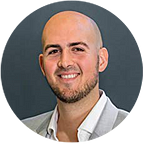Ideas in the Wild: Lee LaMee On Improving Well-Being by Becoming More Balanced, Healthy, and Empowered
Well-being can be a difficult concept to define, but when it’s lacking in life, expectations can seem overwhelming, and every day can feel like a struggle to survive.
That’s why Psychiatric Mental Health Nurse Practitioner Lee LaMee has created a comprehensive process for improving well-being. In The Theory & Practice of Well-Being, Lee explores the components necessary for being — and staying — balanced, healthy, and empowered.
Lee provides a framework for understanding dangerous self-deception, the differences between happiness and enduring contentment, and the five fundamental concepts anyone seeking well-being and contentment must master. With real examples, thought-provoking exercises, and helpful tools, The Theory & Practice of Well-Being is a must-read for anyone searching for enlightenment, growth, and long-lasting wellness. I recently caught up with Lee to find out more about why he wrote the book and the ideas he shares with readers.
Why did you write this book?
Part of the WHO’s definition of well-being points to having our basic physical survival needs met. However, this book is about a larger notion of well-being for individuals. In it, I will provide you with lots of valuable, usable information to assist you to move forward, find a coherent whole, and connect to something bigger than yourself.
This is not just a book about feeling good, being happy, or seeking pleasure, all of which are fleeting. We waste a lot of time pursuing these when really they should ensue. Instead, I look at the notion of content.
Content can be a noun, as in substantive information. Yet it can also be an adjective, as in being satisfied with what we are or have, not wanting more. These lead to the more enduring concept of contentment. I will be providing you with lots of specialized content to help you in your effort to become content.
In this book, I present a unified and coherent conception of well-being, which is, necessarily, more of a description than a definition. I want you to have a clearer, better, usable understanding of what well-being is so you will be able to implement it in your life in a powerful way.
What’s an idea you share that really excites you?
I discuss the four pillars of health with my patients: right sleep, right activity, right food intake, and right attitudes. These pillars are a bedrock to well-being. For example, sleep affects nearly every one of my patients. It is rare that I see someone who sleeps well consistently.
We know that the various sleeping medications have poor evidence of their efficacy and can have concerning side effects. The best evidence for consistently good sleep (without side effects) comes with cognitive behavior therapy for insomnia (CBT-I). Two important foundational principles to this therapy are stimulus response and sleep deprivation.
Stimulus response is the idea that you want to associate the bed predominantly with sleeping (or sex or being sick) and not anything else. If you can’t get to sleep in 15 to 20 minutes (including getting back to sleep if you wake up in the night), it is best to get out of bed and distract yourself with something pleasant and not too activating. The rule of thumb here is don’t go to bed until you’re ready to immediately fall asleep.
Sleep deprivation, which scares a lot of people, is a strategy that allows you to build up the sleep drive. For instance, imagine you are having trouble sleeping and getting no more than five hours of sleep a night on average. The idea of sleep deprivation would be to allow yourself only five hours of sleep by changing the time you go to bed. Like how hunger drive increases with no food, the sleep drive builds as we restrict our time in bed as described above.
Within a night or two, taking care to stay awake completely during the day, you will get tired. As this process takes hold, you can increase your sleep time by 15 minutes incrementally, going to bed that much earlier. This is about rebuilding the body’s natural circadian rhythm. By doing so, you aid your body’s healing and well-being, because sleep is the ultimate “rest and digest” process.
How will following your advice improve your readers’ lives?
As I show in the book, well-being is having a strong sense of self and showing up authentically for ourselves. With the tools and exercises I offer, you will be better equipped to face this Plane of Struggle, this entropy with clarity, courage, and commitment. You will be able to face adversity with reserve, resolve, and resilience.
By following the advice in this book and doing the work, you will be able to modify your inner cognitive map so that you can avoid chronic negative emotions as well as bad choices in the physical habits of sleep, activity, and food intake. This will allow you to enjoy vitality and your body more fully.
Well-being is living life under the best possible conditions. It is well-living, and this book offers insight into the act of living well. It teaches you to focus on the process rather than the results. Ultimately, it is a guide to living life like you mean it and making each day count. With the advice in this book, you can enjoy the best of your humanity and the best of your bigger life.
You have the content to make you content. Live well, be well.
